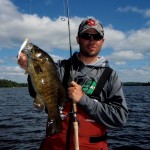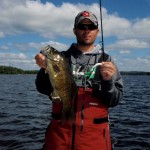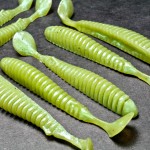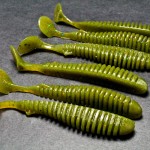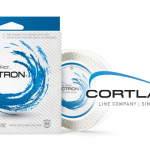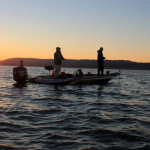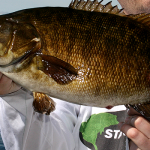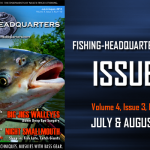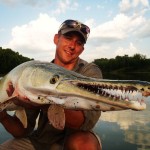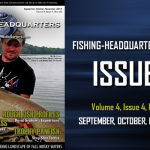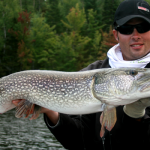By Andrew Ragas
During the cooldown of early fall, bass anglers mistakenly follow smallmouths prematurely into their deep wintering holes. Little do they know that in September and October a unique shallow water movement often associated with weedlines and cabbage beds takes place. Pursue fall smallmouth action where young-of-the-year yellow perch are schooling.
As the seasons undergo a change, a pattern often overlooked by northern bass anglers takes place. Beginning during the pre-turnover stages of the fall cooldown period, schools of yellow perch gravitate to shallow vegetation for sanctuary and feeding. On the prowl, hungry wolfpacks of smallmouths counter.
As water temperatures cool to 60 degrees and lower, northern bass anglers often believe that smallmouths will immediately migrate to their overwintering areas, bypassing easy opportunities to ambush prey. What these anglers disregard is that in most yellow perch populated waters, large populations of smallmouths will delay this movement for up to several weeks based on water temperatures, turnover stage, and presence of this forage species, remaining in the shallows to feed. Understanding this correlating feeding movement between juvenile perch and adult smallmouth bass generates results, and may yield the largest fish of the season during difficult seasonal transitions, and the adverse period known as turnover.
The fall perch pattern is underutilized and little known in my regions of the north country. It’s so far off the bass fishing mainstream that a recent e-mail correspondence with a Wisconsin state biologist, and his disbelief of my Carolina rigging with perch imitating flukes, led to the composition of this article. Although few anglers on my home waters of Northern Wisconsin follow this movement and develop patterns from it, it is the bread and butter on many well known bass fisheries in the Upper Midwest where yellow perch are abundant. Made popular by Great Lakes tournament bass anglers and guides from Lake Erie, Lake Ontario, and Lake St. Clair, the success of fall bass angling on these world class venues is greatly influenced by its y.o.y. (young-of-the-year) perch migrations. Meanwhile, locally, as I would hope that some in Northern Illinois and Southern Wisconsin are aware, the perch pattern is immensely popular on Lake Geneva, with its tactics openly shared throughout internet circles.
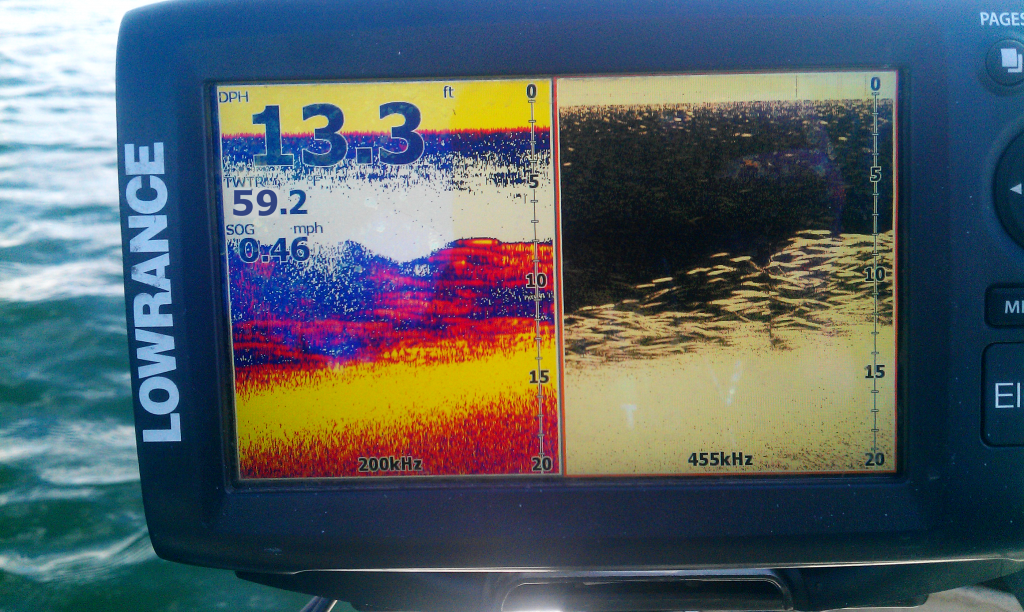
Understanding the Fall Perch Migrations
Depending upon region and climates, the fall cooldown typically begins in early September as water temperatures cool by as much as 5 to 10 degrees below summer peak. During this process, lake water temperatures in my area usually drop to below 60 degrees, signifying the beginning of the turnover process for lakes, and pre-wintering period for smallmouth bass.
Relating to the severity of turnover and prolonged periods of unseasonably warm fall weather, the size of perch schools and longevity of their shallow water migrations will vary annually. Usually, colder and seasonable conditions will result in larger schools, shorter windows, and more predictable migrations. Meanwhile, periods of mild, sunny autumn days of indian summer may result in longer feeding windows for bass, but perch schools of lesser densities. For an already short period that may only last for only up to a few weeks, weather and water temperatures will dictate duration and size of this migration.
In a normal migration, hundreds and possibly thousands of y.o.y. perch will encompass a school. As the cooldown process takes place, perch unite from all areas and depths of the lake where they will heavily congregate in oxygen-filled green weeds and cabbage beds. Perch will migrate to these shallower littoral zones as they offer best oxygen content, feeding opportunities, and sanctuary for the young of the year. A certain percentage of the original school will remain in these areas through the entire fall season and use any remaining green weeds as overwintering habitat. These shallow habitat-rich areas are often large enough to hold these heavy concentrations, and protect them from predation. But that is until they will eventually be preyed upon by large gamefish species that includes smallmouth bass.
As you would expect, the diet of smallmouth bass varies on a lake-by-lake basis. Their diets depend on the availability of forage and what’s most abundant in that particular lake. Because smallmouths are neither completely selective feeders, nor indiscriminate, they are opportunists who will feed on what’s most available during a specific season. In any body of water smallmouths always have a choice of prey and if the abundant prey from several weeks ago is unavailable (i.e. crayfish from mid-summer), they will find an alternative food source. Telemetry studies from the Wisconsin DNR indicate that smallmouths will not undertake an extensive feeding migration towards the opposite ends of the lake to feed on crayfish if another food source is locally available. Therefore, it is important to locate the prime areas where prey is available. During the fall perch migration, smallmouths and their prey will be located in vegetation. In most productive smallmouth waters, yellow perch makes up a large population of forage species, and a percentage of the smallmouth’s diet.
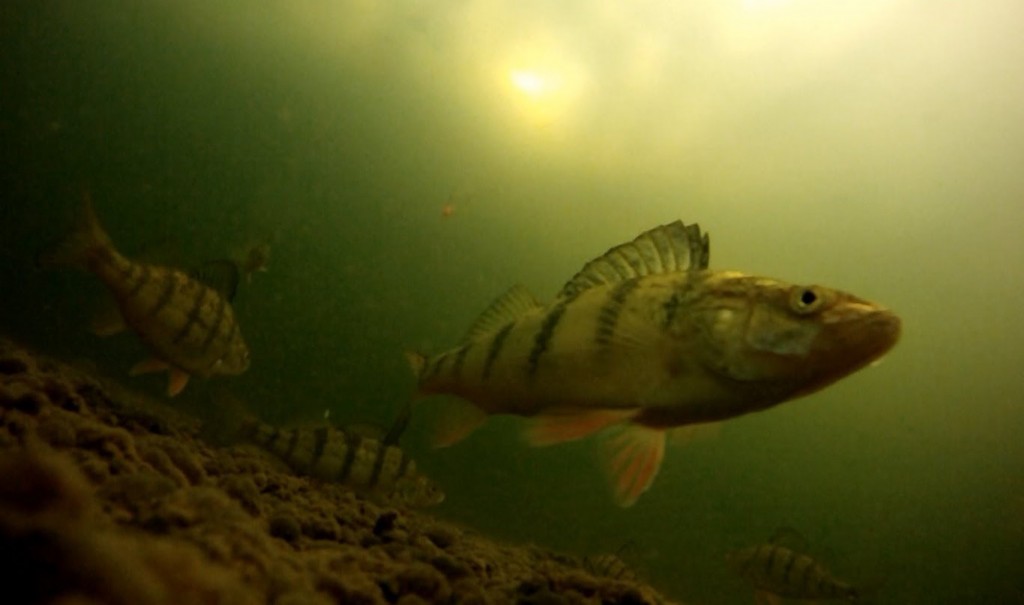
Vegetation is Key Habitat
Unless foraging specifically for baitfish, or displaced by other gamefish species, smallmouths will seldom utilize weed habitat. But when they do, they’ll often conceal themselves in open pockets and along the fringe of the weedbed as they ambush unsuspecting perch schools.
What makes patterning this fall perch migration a success is the presence of lush green weeds in the right areas. Located near main lake areas with access to deep water, weedbeds near, or along, the smallmouth’s annual structure routes for overwintering are most ideal for them assuming prey is present. Several weed types might be available in a particular lake, but on many of my waters, the best for containing perch is thick broadleaf cabbage beds. The cabbage beds that are most suitable for smallmouth feeding are sparse and contain several ambush points, making them ideal for casting and rigging.
Meanwhile, coontail, pondweed, and sandgrass are also ideal habitats. Coontail and pondweed have similar characteristics as cabbage. It’s dense, and offers sanctuary to perch. It doesn’t offer as much ideal cover for smallmouths however. Lastly, sandgrass grows in depths between 10 to 30 feet and offers the lake’s food chain deeper feeding grounds and sanctuary. Perch and smallmouths may use it at this time, but these areas are difficult to fish because specialized presentations are required, and the smallmouths on them are scattered and normally not as concentrated in number.
Weeds with sand or hard bottom content, and that remain green longest and withstand cooling water temperatures, are the most ideal for a smallmouth and perch presence. These locations vary, and may be in water as shallow as 3 feet to as deep as 20 feet or more. The only way to find out if the perch and smallmouth connection can be made is if you locate them on your electronics, or suddenly see a school of juvenile perch following your baits back to boatside.
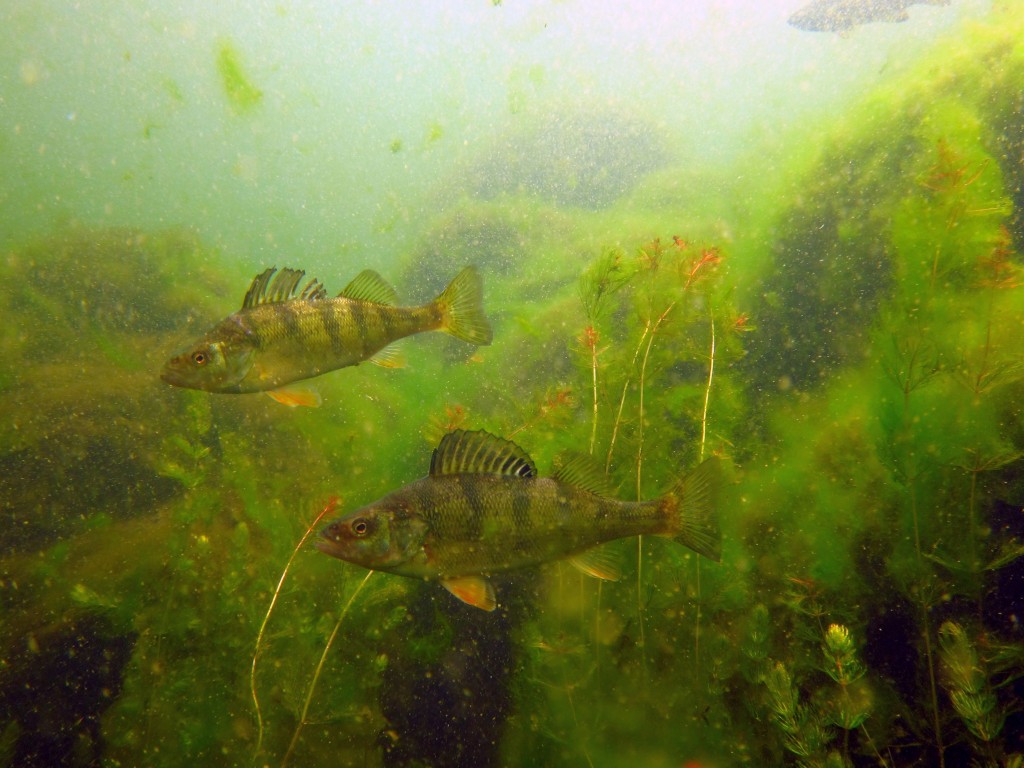
Perch Patterns
Anglers who are already following the perch migrations are using varied presentations to catch fall smallmouths. These presentations are complex, involving specialized rigs and baits to match the hatch, while others are as simple as involving nothing more than hook-line-sinker.
The easiest (and possibly controversial) method of them all is live bait rigging. On specific waters where regulations allow, anglers may catch y.o.y. juvenile perch by hook and line and fish them by jigging and rigging on the same waters ONLY. This live bait tactic has been made popular by Southern Wisconsin anglers who often bring with their ice jigging rods to catch quick bag limits of 25 perch apiece and use the supply as bait to catch fish from waters such as Lake Geneva and other inland waters. The premise of this method is to counter the expensive inflation in price for store-bought redtail chubs and sucker minnows, which is the more traditional and accepted practice for this. Rigged on Lindy rigs, Carolina rigs, drifted by slip float, vertically jigged, or pitched with a weedless jig, numbers of smallmouths are caught annually each fall on waters where this juvenile perch method is legal within regulations.
A simple, but more complex tactic I’ve learned from observing Great Lakes and other big water smallmouth anglers over the years is the use of fluke styled soft baits on Carolina rigs. After last spring’s seminar tour and recent correspondence with other anglers, very few smallmouth anglers in my region are fishing this way, and I wonder why?
The Trigger-X Minnow is one of my absolute favorites to rig with a Carolina Rig. I will also vertically jig as well as snap it through vegetation with the use of a swimming minnow jig.
The Carolina rigged fluke is a virtually weedless presentation that maximizes BOTH the coverage of water and expanded strike zones. It fishes best along deeper weedlines, sparser cabbage beds, weed openings and larger pockets, and sandgrass. Although the weight will catch on leaves, it will rip free easily, often triggering strikes while the minnow suspends. With anywhere from a 1/8oz to 1/2 oz egg sinker or Lindy No-Snag weight running along main line, separated by a bearing swivel with 18 to 24 inches of 12 lb. fluorocarbon connecting you to the hook, a suspending fluke has never looked more realistic in the eyes of big smallmouth. Rigged weedless on a 2/0 Eagle Claw TroKar HD worm hook, the 4″ GNUGEN Live Minnow, Trigger-X Minnow, and 4.25 inch Flukez by Stankx Bait Company have all received their share of big bites these last few seasons from smallmouths in weeds. Although any minnow profiled bait will work well with the Carolina rig in this scenario, I prefer to match the hatch as accurately as possible. Travis Crosman of Stankx Bait Company offers a new “NXT LVL” series of soft baits in which he airbrushes precise forage patterns and color coatings over his injected soft baits. By utilizing this unique air brush and clear coating system, Crosman is able to precisely give his customers the most accurate representations of live perch and other preyfish species so anglers can truly match the hatch.
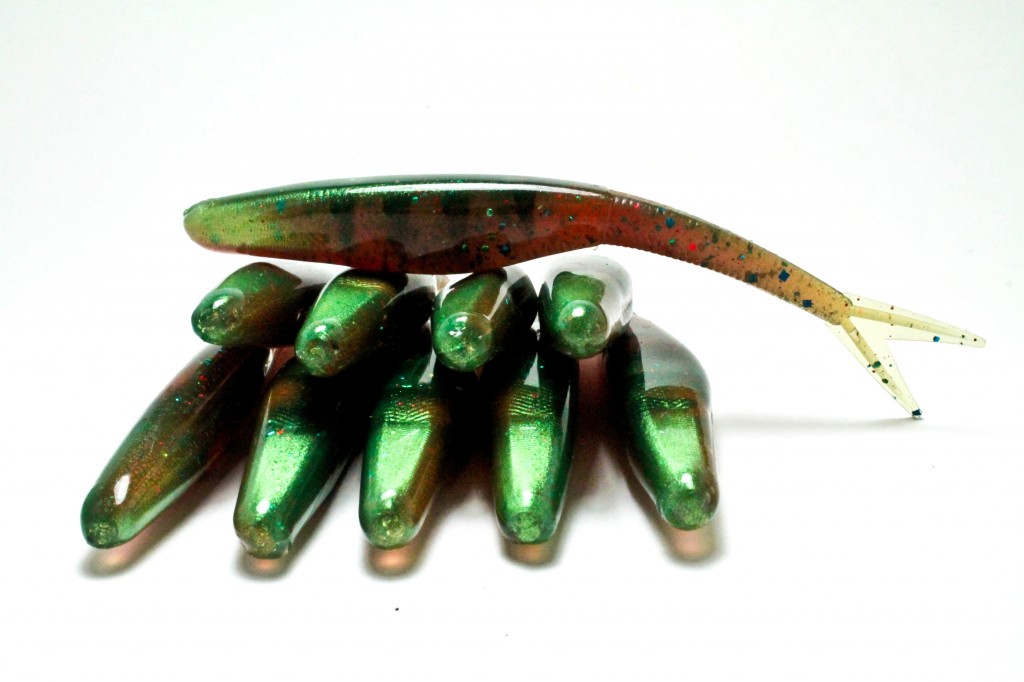
NXT LVL airbrushed soft plastics by Travis Crosman and Stankx Bait Company. Matching the Hatch has never been easier with soft baits. This pattern is one of my favorites we call “Hellcat”.
What works well everywhere, and especially on Rainy Lake, Ontario, where the fall cooldown takes place much sooner in late August and early September, is anglers often find wolfpacks of smallmouths ambushing minnows and perch schools in cabbage beds with bulrushes. A popular technique to combat dense grass such as this is ripping and burning large, gold, willow bladed spinnerbaits over the tops, through the openings, and along the edges. In firetiger or lime/chartreuse patterns, a 1/2 oz Terminator T1 or T2 series spinnerbait works in these situations that call for aggression, and when dealt with a blowing wind.
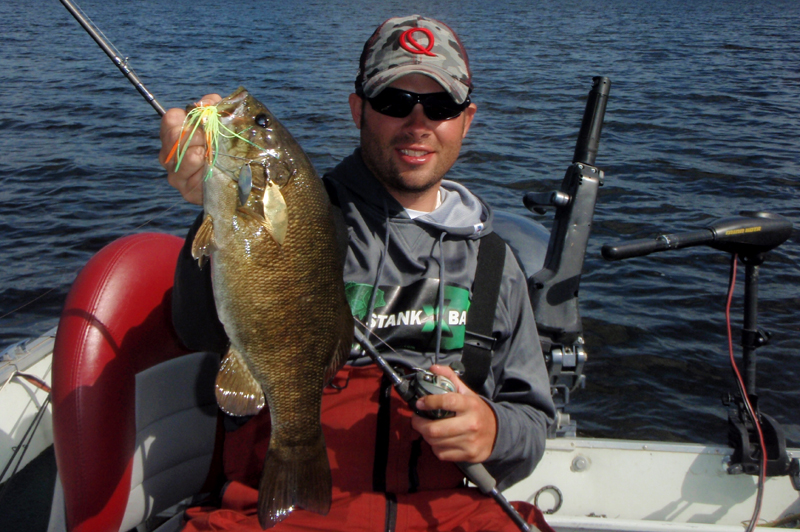
Another set of presentations smallmouth anglers also aren’t utilizing enough are swim jigs and ribbed paddle tail swimbaits. Both are fished best with slow swimming retrieves and several rips in between, giving smallmouths the effect that the bait is in distress and evading dropping down into the abyss of weedgrowth. A few swim jigs I’ve enjoyed swimming through cabbage beds are Terminator’s 3/8 oz. swim jig rigged with a 4 inch Kalin’s Lunker Grub, and Jonn Graham’s hand-made Warrior Jigs, also 3/8 oz., rigged with 3 and 4 inch Big Hammer Swimbaits. With swim jigs, the importance and success of the technique lies upon the lively swimming action of the trailer, and main color scheme of the skirt. Both brands offer perch themed color options.
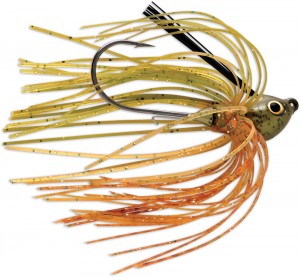
Terminator Swim Jig – Yellow Perch
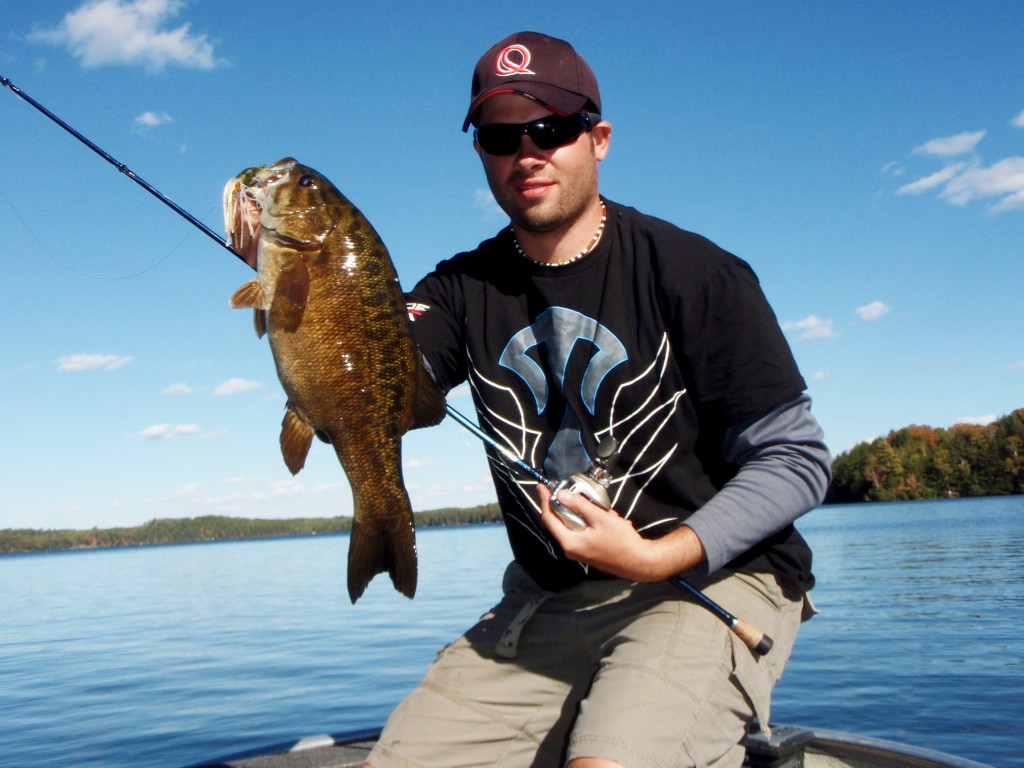
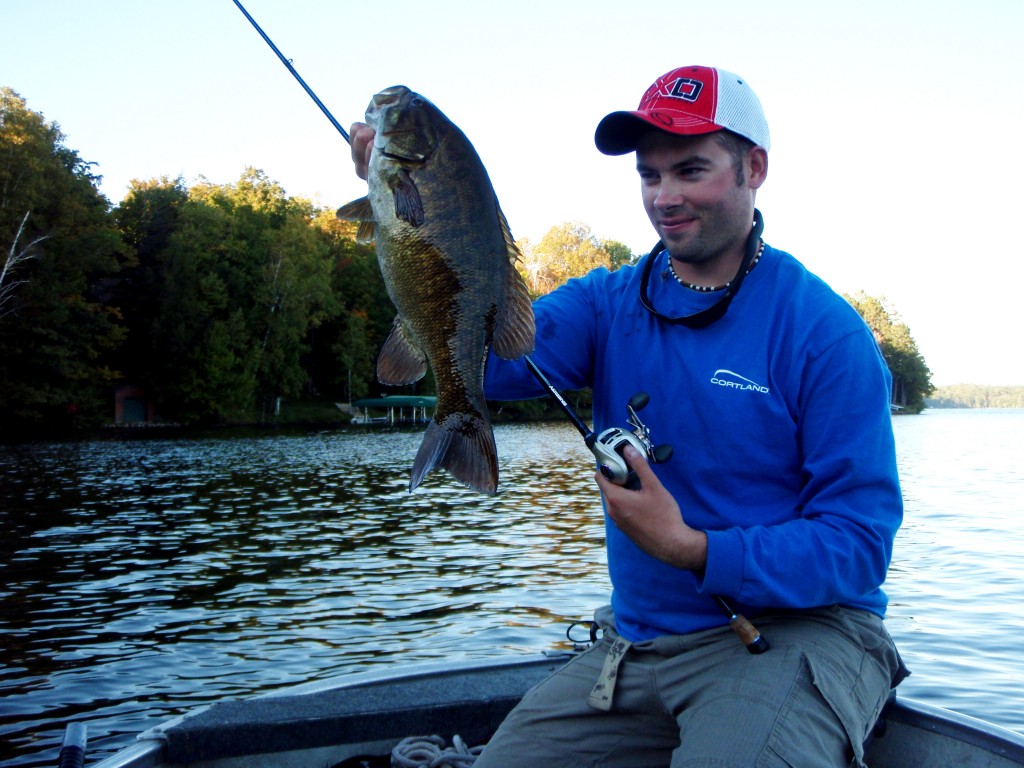
Meanwhile, ribbed paddle tail swimbaits rigged with open exposed minnow head style jigs are the new kids on the block and a technique I’ve enjoyed using a lot in the last month and a half. Modeled off of today’s modern paddle tail swimbaits, the 3.5 inch ribbed Swing Impact FAT by Keitech Inc. (Japan), and Damzel by Stankx Bait Company have changed the way serious smallmouth anglers will be fishing for years to come. Rig either baits with an 1/8 oz. Northland or Matzuo minnow head and let the swimming retrieve and lively paddle tail do all the heavy lifting for you. Add continuous rips and jerks into each retrieve to trigger strikes from both active, and well conditioned smallmouths.
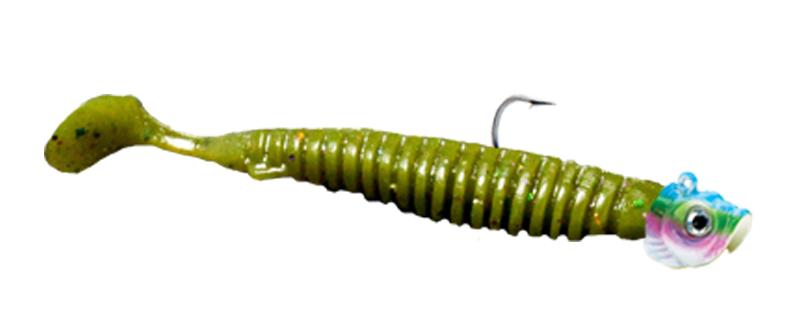
This is my newest favorite rig – the ribbed paddletail swimbait on a minnow style jig. This is the 3.5 inch Damzel by Stankx Bait Company, rigged with Northland’s Mimic Minnow Jig.
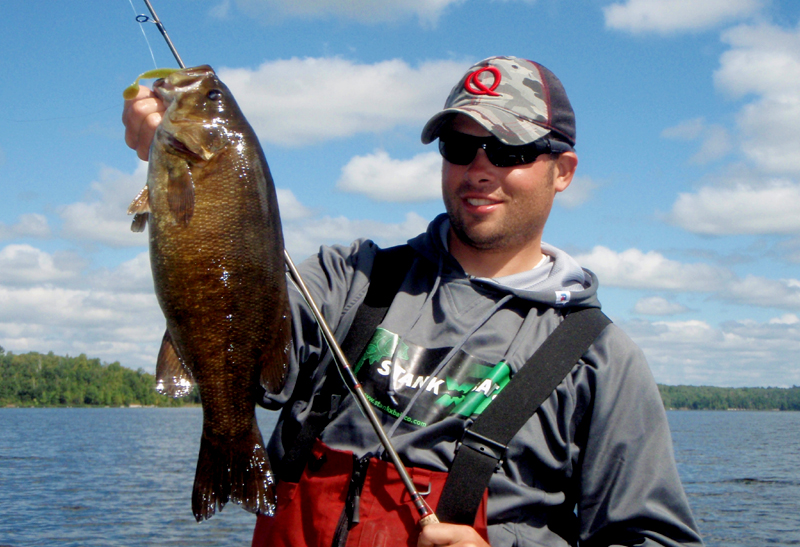
Lastly, lets not forget about the old reliable suspending jerkbait. No other lure category has put more large bass into my boat. A suspending jerkbait is universally accepted by smallmouths, and many new color schemes are available to represent yellow perch. The most ideal I’ve fished with is the size 08 and 10 Rapala X-Rap in mossback shad and yellow perch. Another I’ve recently enjoyed using is the 3.5 inch J Spec and 4 inch Travado by Dynamic Lures. Both are suspending baits and available in perch like color styles. Due to weed presence, a suspending jerkbait fishes best when ripped violently through sparse cabbage and its openings, and along deeper edges.


Rapala X-Raps in size 08 and 10 work great above weed tops and along the edges. Yellow perch and mossback shad get my first picks.
Although I have no specific preference to general tackle for this situation, I let each specific technique I’ve shared dictate my rod and reel selection and line options. 7 foot all-purpose medium heavy spinning and casting set-ups are the most ideal to combat smallmouths preying upon perch schools in vegetation. Braid and copolymer lines are acceptable for all techniques, with 10 to 14 lb. copolymers such as Cortland’s Camouflage being used for most casting set-ups, and thin diameter 15 and 20 lb. Cortland Masterbraid being used on spinning gear for weed ripping. The main importance on tackle selection lies on the requirement to power and rip your way through vegetation and its edges in order to access feeding and ambushing smallmouths. Even though vegetation and cover is involved, it won’t be as dense as you think – no matter where – to justify the need for flipping sticks and even heavier power.
The key to patterning the fall perch migrations is to make sense of the following two variables: Cabbage beds located in the right areas of the lake; and finding the migration of yellow perch on your favorite smallmouth bass lake. Once you find them both and the cooldown prior to fall turnover is underway, some of the best bass fishing of the year within a short window of opportunity will take place.
Article by Andrew Ragas, published in Fishing-Headquarters Online Magazine, issue 20, September, October & November, 2014.





